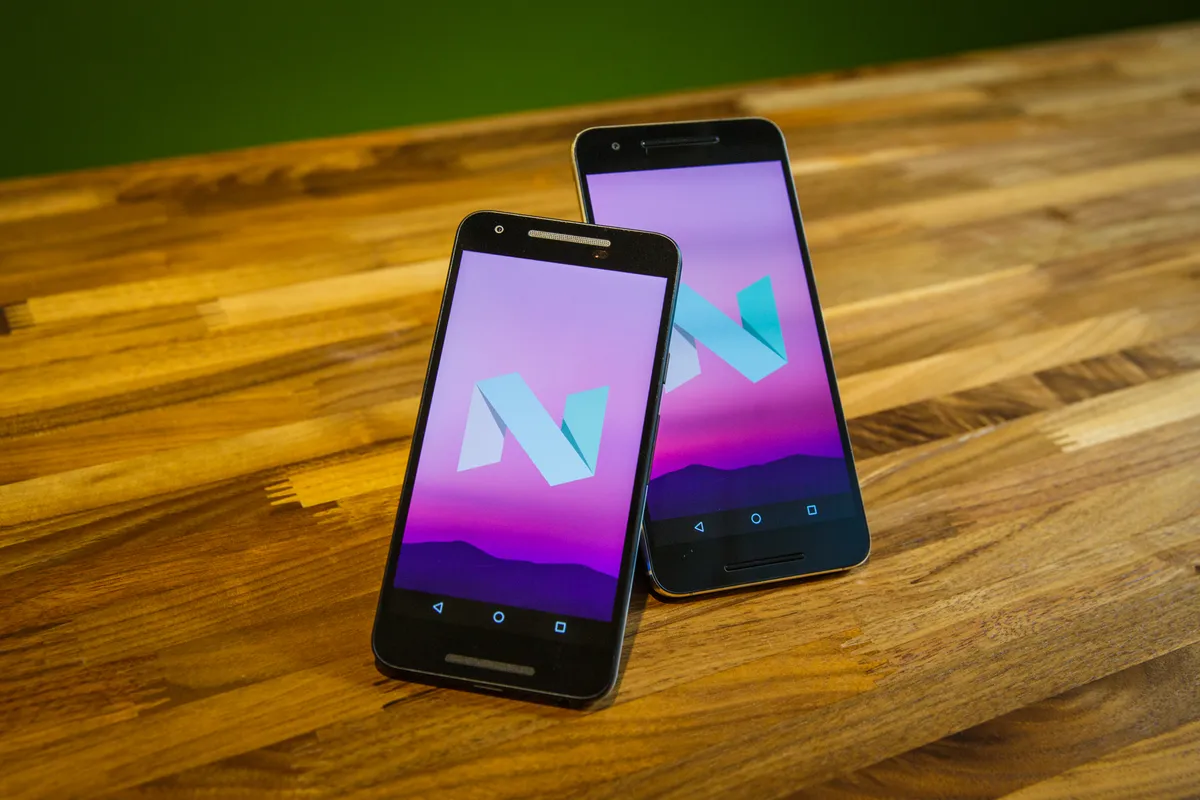In the dynamic world of mobile technology, Android has risen to prominence as a dominant operating system, empowering countless devices across the globe. Throughout its existence, Android OS Versions has undergone numerous updates, each distinguished by a distinct name, and has unveiled an array of thrilling features and advancements.
But not all users know about the enriching history of the Android operating system. There have been more than 15 different Android versions of Android to date, each released with some different form of new features.

Want to know the enriching history of Android from the beginning? Fasten your seatbelts. In this article, we’ll tell you the list of Android versions with names, release dates, and features.
Brief History of Android:
Starting in 2003, Android was founded by Andy Rubin. The company was named Android Inc. In 2005, Google saw its potential, acquired the company, and appointed Andy Rubin as the head of Android OS development. The official launch of Android took place in 2007, accompanied by the announcement of Android OS development.
In 2008, the first-ever phone to run on Android OS, i.e., HTC Dream, was rolled out. The users loved it. In the coming years, every subsequent version of Android was greeted and loved by its audience.
As Android gained popularity, Andy Rubin eventually departed from Google in 2013 to pursue other projects. Sundar Pichai succeeded him as the head of Android. Under Sundar Pichai’s leadership, Android has flourished and now stands at the pinnacle of success.
Like the diverse range of Android OS versions, the evolution of macOS has undergone significant changes over time. Explore the various macOS versions for a comprehensive understanding.
List of Android OS Versions With Names and Release Dates:
Now that we know a brief history of Android let’s move on to the list of all the different Android OS Versions from starting.
1. Android versions 1.0 to 1.1 – No Codename:
Release Date: September 23rd, 2008
The first Android version was version 1.0, which was released in 2008. It was the early production of the Android chain that doesn’t even have a name online for other Android versions.
During that time, Android’s features were quite basic. Still, it came equipped with initial Google applications such as Gmail, Maps, Calendar, and YouTube.
Unlike the current approach of updating apps separately, these Google apps were integrated directly into the operating system. This integration offered a different experience than the more easily updatable standalone apps we are familiar with today.
2. Android 1.5: Cupcake:
Release Date: April 27th, 2009
With Cupcake, Android introduced its tradition of naming versions after desserts. This release was a significant leap forward, adding features like an on-screen keyboard, video recording, and support for third-party widgets. Cupcake began Android’s journey toward becoming a more user-friendly and versatile operating system.
3. Android version 1.6: Donut:

Release Date: September 15th, 2009
In September 2009, Donut arrived with further improvements, focusing on enhancing the user experience and device performance. Donut introduced support for CDMA networks, expanding Android’s reach to more carriers. Quick Search Box (QSB) made finding content on the device faster and easier. The camera interface received updates, improving the overall camera experience.
4. Android 2.0 to 2.1: Eclair:

Release Date: October 26th, 2009
Continuing the rapid pace of Android’s early development, Android 2.0, known as Eclair, was introduced merely six weeks after Donut’s release. Eclair marked a significant turning point for Android, gaining widespread recognition due to its association with the original Motorola Droid phone.
One of the most transformative features of this release was the inclusion of voice-guided turn-by-turn navigation and real-time traffic information. This groundbreaking addition set Android apart in the smartphone world.
Additionally, Eclair introduced live wallpapers to the platform, along with its first speech-to-text function. Also, it created a buzz by bringing the pinch-to-zoom capability, once exclusive to iOS, into the Android ecosystem.
5. Android 2.2: Froyo:

Release Date: May 20th, 2010
Froyo, short for “Frozen Yogurt,” focused on performance improvements and speed. It introduced JIT compilation, making apps launch faster, and also brought support for portable Wi-Fi hotspots and Adobe Flash in the browser. Froyo played a vital role in solidifying Android’s position as the go-to operating system for many devices.
6. Android 2.3: Gingerbread:

Release Date: December 6th, 2010
In 2010, with the release of Gingerbread, Android’s visual identity began to take shape. The bright green color had always been associated with Android’s robot mascot, and in Gingerbread, it was incorporated as a key element of the overall appearance of the operating system.
The UI started to showcase a blend of black and green, signifying Android’s gradual journey toward establishing its unique and recognizable design.
7. Android 3.0 to 3.2: Honeycomb:

Release Date: February 22nd, 2011
Honeycomb, released in February 2011, was a significant departure from previous Android versions, as it was designed specifically for tablets. Honeycomb introduced a new “holographic” user interface optimized for larger tablet displays. The System Bar and Action Bar provided easy access to navigation and app controls.
Multitasking was improved with the introduction of the Recent Apps list. Android 3.0 was introduced exclusively for tablets, debuting alongside the launch of the Motorola Xoom. Throughout subsequent updates like 3.1 and 3.2, Honeycomb remained available solely for tablets and was not open-source like previous Android versions.
8. Android 4.0: Ice Cream Sandwich:

Release Date: October 18th, 2011
Ice Cream Sandwich marked a pivotal moment in Android’s development as it merged the interfaces of smartphones and tablets, delivering a cohesive experience across various devices. The update showcased a sleek design, incorporating virtual buttons, the innovative face unlock feature, and enhanced notifications.
This version represented a substantial leap in Android’s evolution, streamlining its design language and establishing a strong foundation for subsequent iterations. Android Beam was introduced, enabling quick sharing of content between NFC-enabled devices.
9. Android 4.1 to 4.3: Jelly Bean:

Release Date: July 9th, 2012
Jelly Bean brought a smoother and more responsive user experience with “Project Butter.” It also introduced Google Now, a personal assistant that provided relevant information based on user behavior.
Furthermore, Jelly Bean expanded support for multiple tablet user accounts and enhanced accessibility features. Photo Sphere allowed users to capture 360-degree panoramic photos.
10. Android 4.4: KitKat:

Release Date: October 31st, 2013
KitKat optimized Android to run smoothly on devices with lower hardware specifications. It introduced “OK Google” voice activation, immersive mode, and a refreshed user interface. KitKat’s emphasis on efficiency and user experience made it a popular choice for mid-range and budget devices. The immersive mode allowed apps to use the entire screen for a distraction-free experience.
11. Android 5.0 and 5.1: Lollipop:

Release Date: November 12th, 2014
Lollipop, released in November 2014, introduced a complete visual overhaul and brought several new features. Material Design brought a fresh and modern look to the Android UI. The notification system was revamped, giving users more control and interactive notifications.
Battery Saver mode helped extend battery life during critical moments. Lollipop’s visual overhaul and improved performance made it one of the most well-received Android versions.
12. Android 6.0: Marshmallow:

Release Date: October 5th, 2015
When we see the larger context of Android’s development, Marshmallow may have seemed like a relatively minor update compared to previous versions. It felt more like a 0.1-level update than a significant enough change to warrant a full number bump.
Nonetheless, it marked the beginning of a new trend for Google, where they started releasing one major Android version each year, each receiving its whole number.
The most notable feature of Marshmallow was “Now On Tap,” a screen-search functionality that garnered a lot of attention. This feature showed great potential but wasn’t fully utilized or perfected by Google. As time passed, Google quietly retired the “Now On Tap” brand and moved it away from the spotlight the following year.
13. Android 7.0 and 7.1: Nougat:

Release Date: August 22nd, 2016
Nougat introduced split-screen multitasking, allowing users to run two apps simultaneously. It also brought improved notifications, direct replies, and Daydream VR support. Nougat’s multitasking capabilities and enhanced notifications system enhanced productivity and provided a more immersive experience for users.
Nougat also introduced a Data Saver feature, enabling users to control and limit data usage on their devices, particularly useful for those on limited data plans.
14. Android 8.0 and 8.1: Oreo:

Release Date: August 21st, 2017
With the introduction of Android Oreo, the platform received a range of delightful features. One such feature was the native picture-in-picture mode, enabling users to watch videos or engage in video calls while simultaneously using other apps.
Android Oreo also brought a notification snoozing option, allowing users to temporarily dismiss notifications and have them reappear after a set period, making it convenient to handle interruptions.
Another significant feature was the implementation of notification channels. This feature gave users fine control over how apps notify them, allowing them to customize notifications according to their preferences and priorities.
15. Android 9: Pie:

Release Date: August 6th, 2018
Pie introduced a new gesture-based navigation system, making navigation more intuitive and fluid. It also introduced “Digital Wellbeing” features, helping users manage their screen time better.
Adaptive Battery and Adaptive Brightness used machine learning to optimize battery usage and screen brightness. Pie’s emphasis on user well-being and intuitive navigation continued Android’s trajectory of providing a user-first experience.
16. Android version 10:

Release Date: September 3rd, 2019
In September 2019, Google released Android 10, which significantly departed from previous versions. It was the first Android release to be identified solely by a number, abandoning the tradition of dessert-themed names.
One of the most noticeable changes in Android 10 was the complete overhaul of the interface for Android gestures. The familiar tappable Back button was eliminated, and instead, a fully swipe-driven approach was introduced for system navigation.
17. Android version 11:

Release Date: September 8th, 2020
Android 11, released in early September 2020, represented a substantial update for Android, both in terms of underlying improvements and visible changes. One of the most prominent areas of focus in this version was privacy.
Building upon the expanded permissions system introduced in Android 10, Android 11 took privacy to the next level. It introduced a new option that allowed users to grant location, camera, and microphone permissions to apps on a limited, single-use basis.
This gave users more control over their data and provided an added layer of security by restricting app access to sensitive functions only when needed.
18. Android 12:

Release Date: October 4th, 2021
Android 12, released in October 2021, introduced a major visual overhaul and more features for customization. “Material You” brought dynamic theming, adapting the system colors based on the user’s wallpaper.
Privacy Dashboard provided a clear view of app permissions and data access. Quick Settings received a revamp, making it more intuitive and user-friendly. This Android revamped the interface to a lot extent.
19. Android version 13:

Release Date: August 15th, 2022
Android 13 is considered one of the most peculiar Android versions to date. Android 13 introduces an entirely new interface design for users of tablets and foldable phones. The focus is on providing an exceptional large-screen experience within the operating system and in apps.
This revamp includes a fresh framework and a set of guidelines to optimize apps for large screens. Android 13 brings significant advancements to tablets and foldable devices, aiming to deliver a seamless and productive user experience on these larger screens.
20. Android version 14:

Release date: To be announced [August 2023 – expected release]
The developers announced the Android 14 version in February 2023. It is expected to be released in August 2023 for beta testing. It will not be available to all devices. The update will come only on the supported devices. This version promises a new interface with some features yet to be announced.
Conclusion:
The journey through Android OS Versions history reveals a remarkable evolution. From the early days of Alpha and Cupcake to the modern and customizable Android 14, the operating system has come a long way. As it evolves, we eagerly wait for new features.
Which version is your favorite, and what features would you like to see in the next Android OS Versions update? Let us know in the comments section below.


![50 Most Beautiful Women In The World [Updated 2024] Most Beautiful Women in the World](https://www.newvisiontheatres.com/wp-content/uploads/2022/12/Most-Beautiful-Women-in-the-World-200x114.png)



